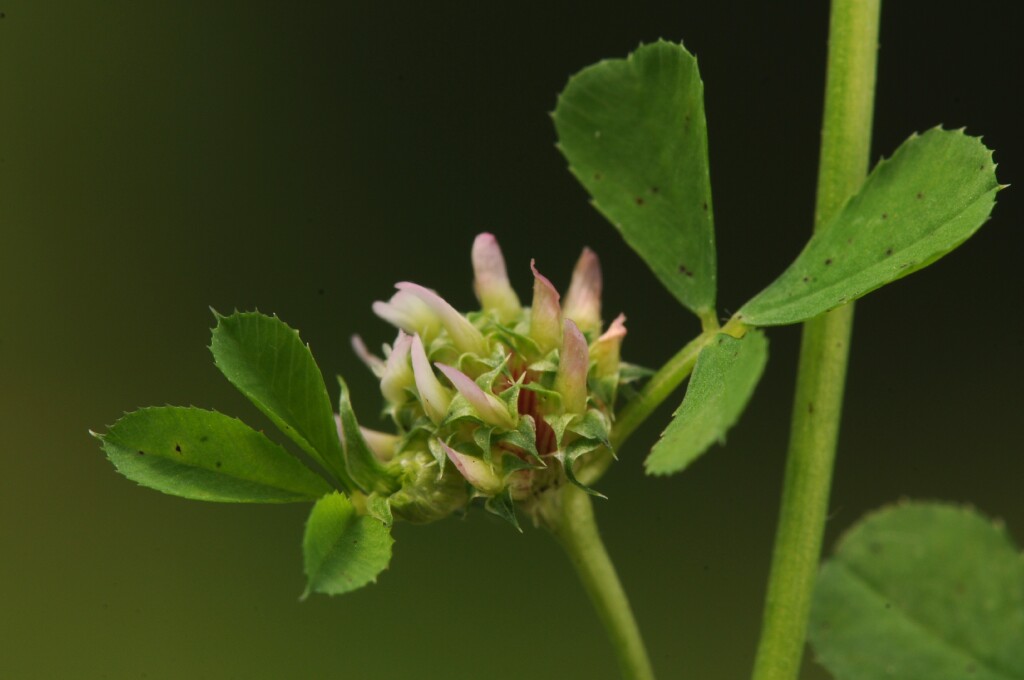Trifolium glomeratum
L. Clustered CloverProstrate or ascending annual herb; stems few, 10–30 cm long, branching, glabrous. Leaves palmately trifoliolate, long-petiolate to sessile; leaflets obovate to oblanceolate, 6–15 mm long, 4–10 mm wide, glabrous, prominently veined, finely toothed, apex rounded or retuse; stipules white, membranous, adnate to petioles for half their length. Inflorescences mostly more than 20-flowered, remote, axillary, globose, 8–10 mm long, 8–10 mm wide, sessile; flowers sessile to subsessile. Calyx 3–4 mm long, glabrous, tube cylindric-obconical, 10–12-veined, throat open, teeth equal, shorter than tube, spiny, with broad overlapping bases, spreading or recurved in fruit; corolla 6–8 mm long, pink, persistent; standard oblong-ovate, conduplicate. Pod obovoid, 2–3 mm long, included in calyx tube; seeds 1 or 2, reniform, c. 1 mm long, brown, tuberculate. Flowers mainly Sep.–Dec.
LoM, MuM, Wim, GleP, VVP, VRiv, RobP, MuF, GipP, OtP, WaP, Gold, CVU, GGr, DunT, NIS, EGL, EGU, WPro, HSF, HNF, OtR, Strz, MonT, VAlp. Also naturalised WA, SA, Qld, NSW, ACT, Tas. Native to Europe, the Middle East, northern Africa. Common and well-established weed throughout most of Victoria.
Jeanes, J.A. (1996). Fabaceae. In: Walsh, N.G.; Entwisle, T.J., Flora of Victoria Vol. 3, Dicotyledons Winteraceae to Myrtaceae, pp. 663–829. Inkata Press, Melbourne.
 Spinning
Spinning



